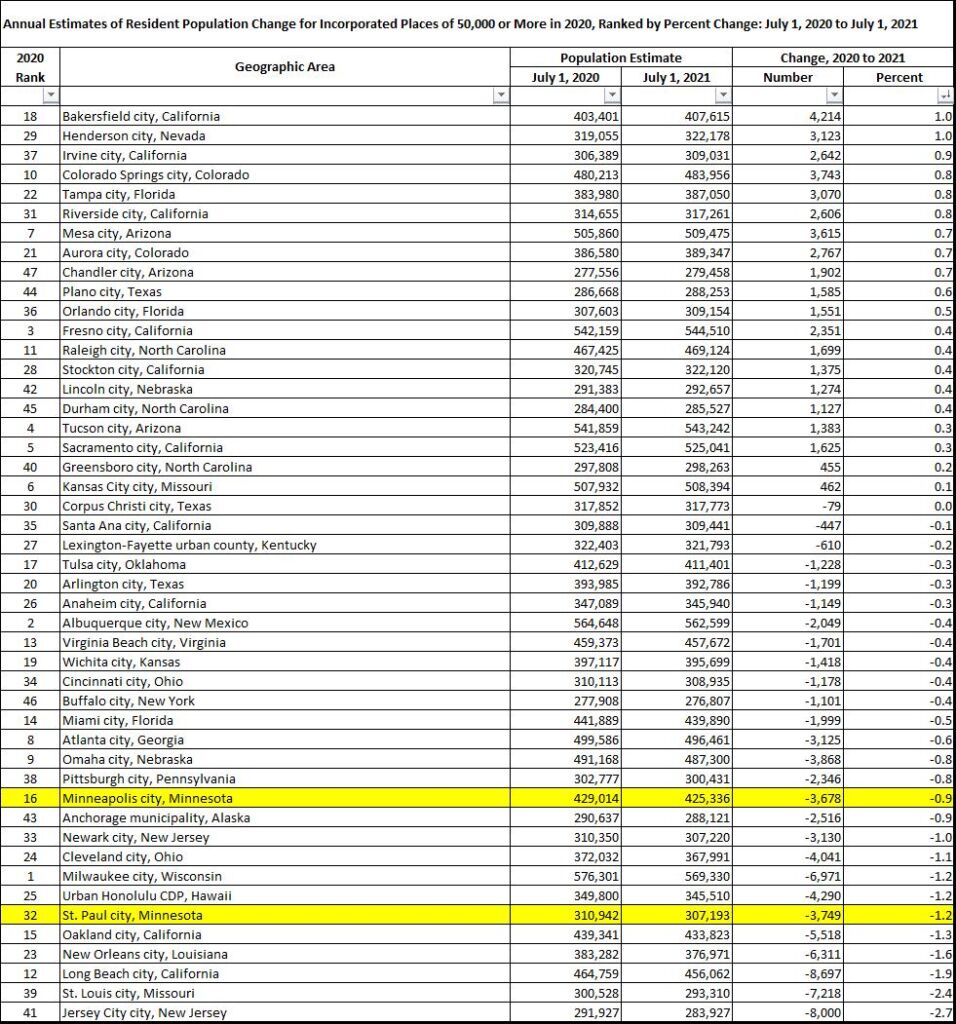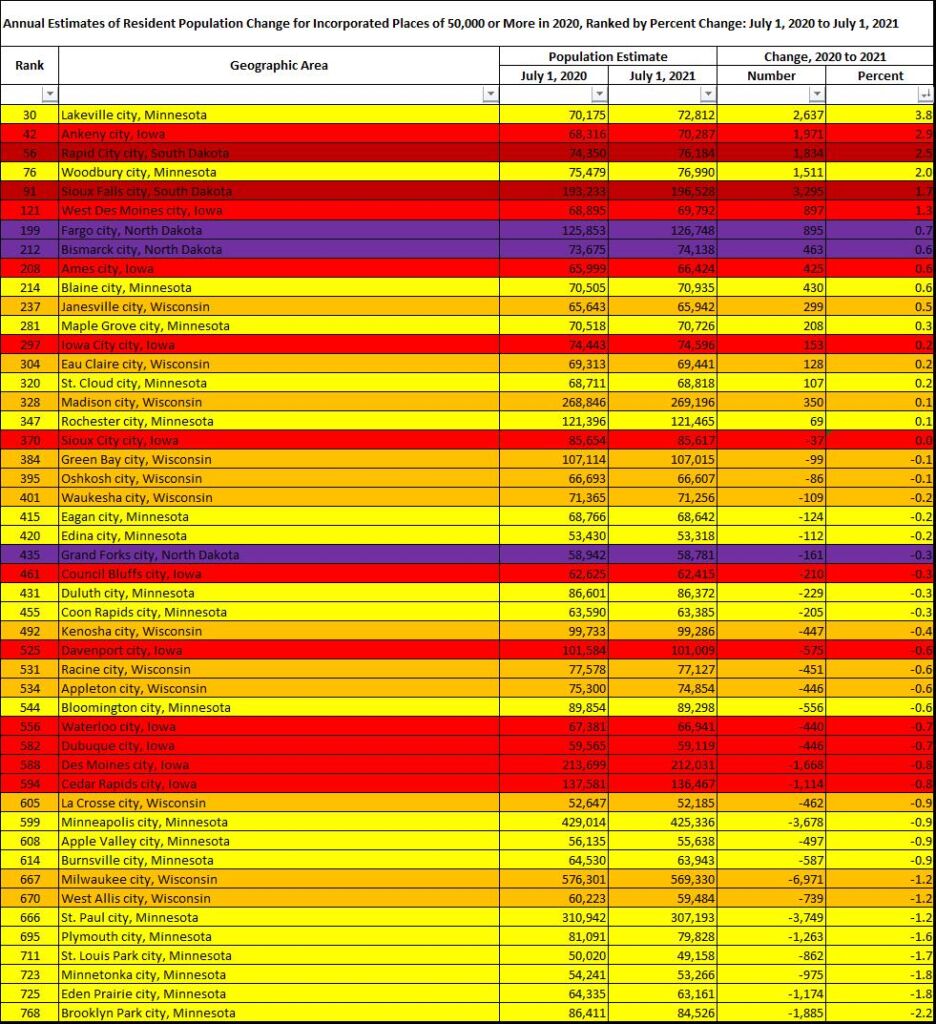Minneapolis and St. Paul lost residents in 2021
In 2021 Minnesota’s population grew by just 225 people, losing 13,453 residents to other states. This was Minnesota’s biggest net loss of domestic migrants to other states in at least 30 years. 2021 also saw the Minneapolis-St. Paul-Bloomington Metropolitan Statistical Area (MSA) lose a net of 15,462 residents to other places in the United States, up from a loss of 1,236 the previous year.
New Census Bureau data tell the story for the cities of Minneapolis and St. Paul specifically. In 2021, Minneapolis lost 3,678 residents (a decline of 0.9% in its population) and St. Paul lost 3,749 residents (a decline of 1.2%).
To put this in context, in terms of population Minneapolis and St. Paul ranked 46th and 62nd out of 795 cities across the United States in 2020. If we create a peer group of 47 cities (the two cities plus the 15 ranked above Minneapolis, the 15 ranked between Minneapolis and St. Paul, and the 15 ranked below St. Paul), Table 1 shows that 20 (42%) saw population increases in 2021. Not only were Minneapolis and St. Paul among those 27 cities that saw their populations decline, they also saw relatively steep declines, ranking 36th and 42nd out of 47 respectively.
Table 1: Population changes, 2020-2021

How does this compare to Minnesota’s neighbors?
Table 2 shows that there were 48 cities in Minnesota and its four neighboring states. Of these, 17 (35%) saw their populations increase from 2020 to 2021. As Table 3 shows, cities in Minnesota and Wisconsin were less likely to gain residents than cities in Iowa, South Dakota, and North Dakota, and more likely to lose them.
Table 2: Population changes, 2020-2021

Table 3: Population gain/loss, Minnesota and neighboring states, 2020-2021

These numbers show that Minnesota’s cities fared poorly in terms of population growth compared to their peers both nationally and in neighboring states. Considering how important the Twin Cities are to our state’s economy, this should be a source of concern to policymakers.